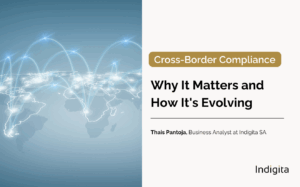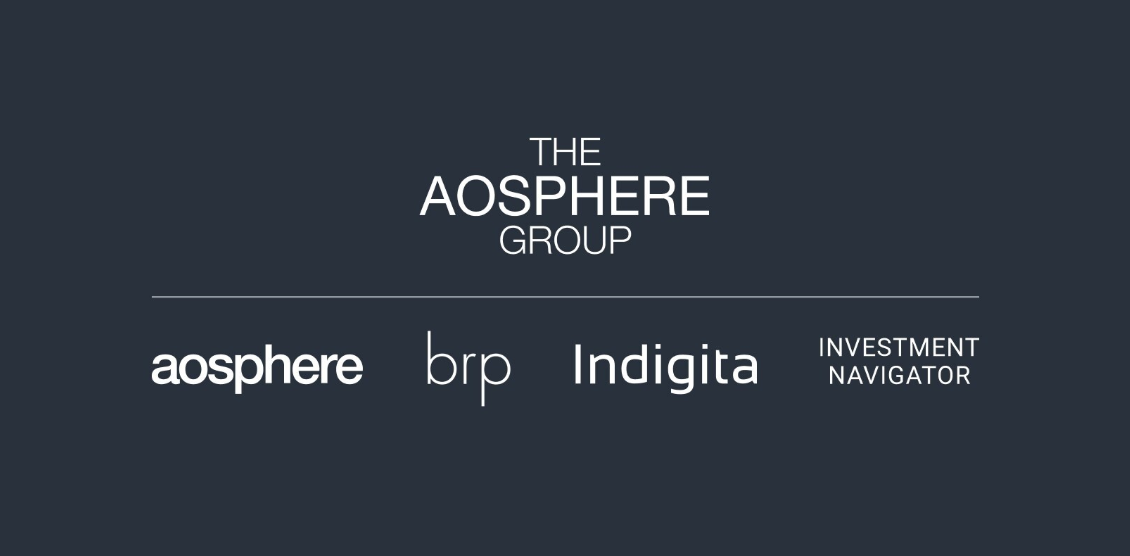Authored by Thais Pantoja, Business Analyst at Indigita SA.
In an increasingly interconnected financial world, cross-border compliance has emerged as one of the most critical and complex responsibilities for banks and external asset managers (EAMs). But what exactly does it mean, and why is everyone talking about digitizing it?
This article offers a quick, practical overview for professionals who want to understand the challenges and opportunities of cross-border compliance today.
What Is Cross-Border Compliance?
Cross-border compliance refers to the legal and operational framework that governs how financial institutions interact with clients across national borders. It applies to any interaction with clients domiciled abroad whether initiated by the bank (active solicitation) or by the client (reverse solicitation). In both cases, banks and external asset managers (EAMs) must ensure they follow not just their own country’s laws, but those of the client’s country as well.
Why It’s So Complex
The main challenge brought by cross-border regulations is that there is no single international rulebook. Regulations vary significantly between countries, and the same client interaction may be allowed in one jurisdiction and prohibited in another.
Key areas regulated under cross-border rules include:
- Licensing and legal conduct requirements
- Product placement and marketing
- Investor protection (e.g. MiFID II, FinSA)
- Tax suitability
- Client data privacy (e.g. GDPR, nFADP)
In Switzerland, the Financial Market Supervisory Authority (FINMA) underscored cross-border regulations as early as 2010, emphasizing its focus on the conduct and risk management of institutions engaged in cross-border activities.
The Risks of Getting It Wrong
When cross-border rules are violated, consequences can be severe:
- Regulatory fines and sanctions
- Loss of client trust or reputational damage
- Restrictions on market access
- Civil or tax-related litigation
- Personal liability for bankers and executives
Traditionally, banks have relied on static country-specific regulatory documentation, fragmented approvals, and manual post-trade checks. Such compliance methods no longer hold up in today’s real-time, high-volume, multi-jurisdictional environment.
A Shift Toward Digitization
To manage complexity and reduce risk, the industry is shifting toward digitized cross-border compliance frameworks. This involves embedding regulatory logic directly into banking systems and automating controls across the client lifecycle.
What does that look like in practice?
- Digitized country-specific regulatory documents: replacing PDFs with real-time and scenario-based rule engines
- API integrations: linking compliance rules to onboarding, advisory, and trading platforms
- Dashboards & KRIs: real-time monitoring of market exposure, RM activity, and risk indicators
- Automated travel approvals: based on completed jurisdiction-specific training
- Digital training tools: assigning, tracking, and tying training status to system permissions
The result: more efficiency, fewer human errors, and stronger auditability.
Governance Framework That Works
Technology alone is not enough. Effective cross-border compliance requires a structured governance framework that ensures rules are embedded at all levels of the organization, from strategic planning to front-line execution.
Four-pillar approach built on observed industry best practices:
Strategic Direction: The Board of Directors defines the cross-border strategy (i.e. which countries to target, what services can be offered, and how much risk is acceptable).
Operational Setup: Compliance and business teams translate the strategy into concrete tools and responsibilities. This includes digitizing rules, defining approval workflows, and integrating training systems.
Monitoring and Oversight: Key Risk Indicators (KRIs), dashboards, and training status are tracked in real time to ensure Front Office staff are qualified and compliant.
Annual Review and Adjustment: Governance must stay proactive. Regular reviews of markets, rules, and training effectiveness help institutions adapt to change and maintain relevance.
This model ensures that digitized tools are supported by clear strategy, strong governance, and continuous improvement.
What About AI?
Artificial intelligence is beginning to shape how Compliance teams manage complexity. AI-powered assistants could support notably:
- Smart guidance (e.g., “Can I offer this fund to my client in Spain?”)
- Red flag detection for risky interactions
- Personalized training based on market exposure
That said, general-purpose AI tools like ChatGPT are not ready for regulated environments. Their outputs are not jurisdiction-specific, not auditable, and may carry mistakes and GDPR risks. Future-proof compliance requires supervised, embedded AI tools, trained on validated legal content, and not open-ended models.
The Bottom Line
Cross-border compliance has become a strategic pillar of how financial institutions grow internationally while managing regulatory exposure.
To stay competitive and compliant institutions must move from static compliance frameworks to digitized, real-time, and smart compliance infrastructures. This transformation requires not just technology, but strong governance, training, and a corporate culture that sees compliance as a business enabler and not just a barrier to it.
To learn more, download your FREE cross-border in the digital age report: Click Here




